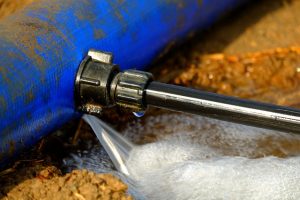A pipe burst in your business premises can be a nightmare, causing not only immediate chaos but also potential long-term damage. Whether it’s due to freezing temperatures, corrosion, or wear and tear, quick and effective action is crucial to minimize the impact. The best way to prepare is to learn the essential steps to promptly recover from a pipe burst at your business. This way, you can ensure minimal disruption and prevent further complications. These steps range from identifying the cause to hiring a professional.
Table of Contents
Toggle1. Identify and Isolate the Issue
The first step in dealing with a pipe burst is swift identification and isolation of the problem. Locate the source of the leak and turn off the main water supply to prevent further damage. It’s imperative to act quickly to minimize the extent of the damage and safeguard your assets. If you’re unable to identify the source or if the situation seems overwhelming, contacting a professional immediately is the wisest course of action. Timely action not only mitigates damage but also helps you regain control of the situation. Keep in mind that some water shut-off valves may require a specific tool, so familiarize yourself with their location beforehand to expedite the process during an emergency.
2. Document the Damage
Before initiating the cleanup process, take the time to thoroughly document the extent of the damage. Use your smartphone to capture photos and videos of affected areas, including damaged inventory, equipment, and structural elements. This documentation will not only be valuable for insurance claims but also help professionals assess the situation more accurately. Make sure to keep a detailed record of all damages and any immediate actions taken. Your careful documentation is an important asset during insurance claims, facilitating a smoother and more efficient process.
3. Remove Standing Water
Once the leak is contained, the next vital step is to remove any standing water promptly. Standing water can lead to further damage, including structural issues, mold growth, and damage to inventory or equipment. Utilize pumps, wet vacuums, or mops to extract water efficiently. Prioritize high-traffic areas and spaces with valuable assets. Consider employing specialized moisture-detection tools to identify hidden pockets of water. This ensures a thorough extraction process and prevents potential long-term issues. Furthermore, using absorbent materials such as towels or sponges in conjunction with extraction tools can help absorb residual moisture, enhancing the effectiveness of the drying process.
4. Thorough Drying and Dehumidification
After removing standing water, the focus shifts to thorough drying and dehumidification of the affected areas. Moisture left behind can contribute to mold growth and compromise the structural integrity of your business premises. Use industrial fans and dehumidifiers to accelerate the drying process. Ensure proper ventilation to facilitate the evaporation of residual moisture. Additionally, strategically placing desiccant materials in critical areas can absorb excess moisture, expediting the drying process and minimizing the risk of lingering dampness. Regular monitoring of humidity levels is essential during this phase to gauge the effectiveness of the drying efforts.
5. Professional Assessment and Restoration
While initial steps are critical, seeking professional assistance is paramount for comprehensive restoration. Contact a reputable commercial water damage restoration service to assess the damage thoroughly. Professionals have the expertise and equipment to identify hidden issues, such as water trapped behind walls or beneath flooring. They will develop a tailored restoration plan, addressing structural damage, mold remediation, and ensuring the affected areas are restored to pre-damage conditions. A professional assessment not only guarantees a thorough understanding of the damage but also lays the groundwork for an effective and efficient restoration process.
Safeguarding Your Business
Recovering from a pipe burst at your business demands a swift and systematic approach. Identifying and isolating the issue, documenting the damage, removing standing water, and thorough drying are the key steps in this process. Remember, time is of the essence in reducing the impact of a pipe burst, so don’t hesitate to seek professional help and safeguard the future of your business. By acting promptly and efficiently, you not only minimize immediate damage but also lay the foundation for a successful restoration. A proactive stance towards recovery ensures not just business continuity but also strengthens your resilience against unforeseen challenges.











